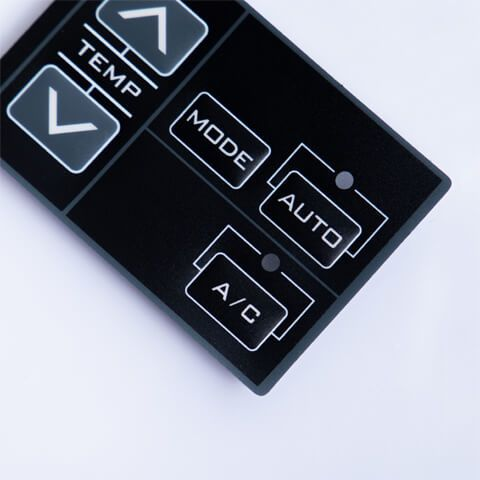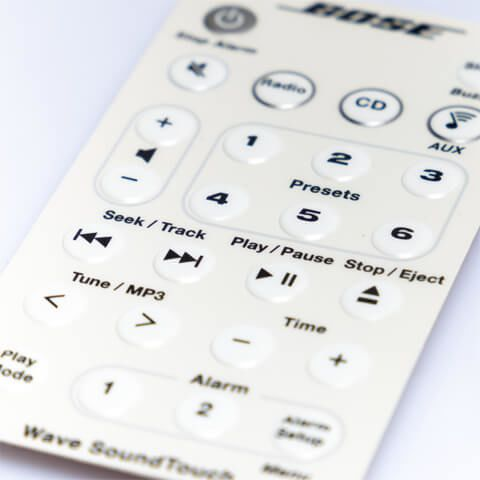Contact
Write to Us And We Would Be Happy to Advise You.
Do you have any questions, or would you like to speak directly with a representative?
By hqt

If you’ve ever had to research membrane keypad design, or even choose a keypad for a piece of electronic equipment, the number of keypad technologies available on the market today can be a bit overwhelming. In this blog post, I will talk about two keypads that look very similar but work on completely different electronic principles.
Both types of keypads usually consist of flat metal discs, sometimes surrounded by a luminous ring that lights up when the keypad is activated.
They are usually flush-mount with the control panel and have no moving parts, are often highly wear-resistant, dustproof, waterproof, and suitable for repetitive work. The durability of these membrane keypad design means they can withstand millions of operations and require little or no maintenance.
What is a Membrane
keypad design membrane is a small disc made up of two layers; the inner ceramic layer and the outer layer are usually of a metallic material.
The membrane keypad is based on a mechanical displacement or bending of the membrane ceramic – also known as the membrane electric effect.
Capacitive membrane keypad design
On the other hand, a capacitive keypad, also known as a capacitive keypad, only requires one electrode behind a non-conductive panel. The keypad takes advantage of the body’s capacitance by taking advantage of the electrical charge that naturally carries the human body.
How to choose between the two A
membrane keypad detects touch force or relies on a small force, while capacitive keypads require a charge or electrode. Thus, for devices that only need to respond to human touch, a capacitive touch membrane keypad design is ideal for this purpose.
Capacitive keypads are common in a wide variety of applications, from medical, laboratory, and food processing equipment to consumer applications such as home appliances, vending machines, and elevator controls.
In terms of cost, capacitive keypads are usually cheaper than membrane keypads in terms of raw materials.
The user wearing thick gloves cannot operate the capacitive keypad. That’s where the membrane keypad comes into its own – these keypads will work regardless of the type of glove the user is using as the membrane keypad design depends on pressure, no human touch.
Similarly, these days, we have sensor keypads where we do not need to touch any button.
Membrane keypad is anti-vandal, waterproof, and dustproof, with IP68 and IP69K protection. A line of high-strength capacitive touch keypads releases soon.
Using transparent capacitive touch keypads
The use of capacitive touch keypads is widespread and more frequent every day. Capacitive touch keypads are common in thousands of everyday devices:
Some of the benefits of using a capacitive touch keypad are customizability, transparency options (allowing a wide range of backlighting options), and no moving parts.
These types of keypads provide high reliability and low-cost solution for applications that can benefit from a low-profile keypad design.
keypads work by creating an electric field that is constantly monitor by a microcontroller. When the electric field is disturbed, changes in capacitance are recorded, triggering a keypad closure event.
The change in capacitance in an electric field comes by a human finger, gloved finger, stylus, or anything with electrical properties like a human finger.

Generally, the use of keypad is common in every field. Similarly, the requirement of every industry is also different. For a specific product, you need separate design . That is why, we insist on hiring an expert company which ensures professionalism and skill to the end.
The actual sensors or electrodes of a capacitive touch keypad are simple in design. For a capacitive touch keypad to function, both positive and negative conductive elements must be designed with an air gap or insulation material separating them.
The exact shape of the electrodes does not matter; in fact, the shape of the electrodes suits any desired membrane keypad design shape. Their shape, a square, or even a large custom shape.
In keypads of this type, electrical signals are output from the keypad panel through a tail, ribbon flex, or another type of wiring harness. The end of the flex cable or flex cable with any suitable connector since no special interconnects to support capacitive touch technologies.
As with any circuit, the circuit requires conductive material to work. The most common contact pad material for capacitive sensors is copper. It is the main conductive material in most rigid printed circuit boards and flexible circuits.
Since capacitive touch keypads can use cheaper circuit options such as silver ink coated polyester, these are viable options to consider.
However, if your design requires the use of a transparent capacitive touch keypad, the use of copper or conductive silver ink requires additional consideration.
This design uses conductive materials such as copper or conductive ink. The shape of the touchpad provides a transparent window in the center of the membrane keypad design. It comes with a conductive material around the perimeter.
This type of keypad provides minimal risk in material selection, but the shape, size, and operation of the keypad itself.
The capacitance field size so that the keypad registration by the paired microcontroller.
Conclusion
The use of transparent conductive materials is widespread in products such as:
These applications require a transparent circuit while still providing some of the electrical functions of the product.
The same is true for some types of capacitive touch membrane keypad design and their use of transparent conductive materials.
Do you have any questions, or would you like to speak directly with a representative?